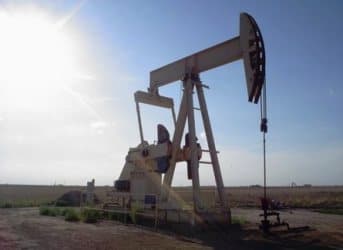According to the U.S. government’s Energy Information Agency, “In 2009, India was the fourth largest energy consumer in the world, after the United States, China, and Russia. Despite a slowing global economy, India's energy demand continues to rise. As vehicle ownership expands, petroleum demand in the transport sector is expected to grow in the coming years. While India's domestic energy resource base is substantial, the country relies on imports for a considerable amount of its energy use. According to the International Energy Agency, hydrocarbons account for the majority of India's energy use.”
The good news?
According to the EIA, in 2011 India had approximately 5.7 billion barrels of proven oil reserves, the second-largest amount in the Asia-Pacific region after China, primarily light and sweet crude. In 2010 India produced roughly 750,000 barrels per day crude oil.
The bad news?
In 2010 India consumed 3.2 million bpd, and imports are rising, the cost of which represents a growing strain on India’s Treasury. In 2010 India was the world's fifth largest net importer of oil, importing more than 2.2 million bpd, roughly 70 percent of its indigenous consumption, primarily from the Middle East, with Saudi Arabia and Iran supplying the largest shares.
Accordingly, Indian crude oil imports energy bill for 2011-12 now stands at $150 billion, of $475 billion, producing a trade deficit of $175 billion, with oil imports now comprising a massive 85 percent of India's total trade deficit.
It is in this austere context then, that the rapturous reports of recent oil finds off India’s western coast must be judged.
On 11 August “The Economic Times,” India’s equivalent of “The Wall Street Journal,” trumpeted the headline, “ONGC makes huge oil discovery off West coast.” The newspaper announced to its readers, “ONGC today said it has made a huge oil discovery off the West coast that will help the state-owned firm raise its sagging oil output.
The new discovery was made in the currently producing D1 oilfield. The find ‘will catapult D1 to become the third largest field in western offshore after prolific Mumbai High and Heera,’ Oil and Natural Gas Corp (ONGC) said in a statement.”
Reality only reasserted itself in the third paragraph, where the journal informed its readers, “D1, which is currently producing 12,500 barrels per day (bpd), had an approved peak output of 36,000 bpd. With the new discovery, the peak output would jump to 60,000 bpd or three million tons a year.”
India currently imports roughly 362,000 barrels per day, of which – 60,000 bpd comes from Iran.
So, when D1 comes fully online by 2016-17, it will only replace India’s Iranian exports, which are already due to shrink under UN sanctions, which India has agreed to observe, netting New Delhi a zero-sum game.
India has long had an interest in D1 and the country’s offshore reserves, with the first well in D1-4 block drilled in the year 1976, 36 years ago, when its low gas-to-oil ratio (GOR) and the company’s poor understanding of its reservoir led to slow development of the field’s appraisal and exploration. ONGC said in a statement, "As a result, the first development scheme for the D1 field was confined only to the D1-4 block in which a total 12 wells were drilled in two phases. After completion of Phase-II, the field achieved a peak oil production of 17,500 barrels per day in the year 2009. Currently, D1 is producing on an average of 12,500 bpd." ONGC accounted for 62 percent of India's crude oil and 49 percent of its natural-gas output in the first quarter of 2012 which ended 30 March.
But, in more realistic and happy news for Indian investors, a weaker rupee during the June quarter led ONGC, India's biggest energy explorer, to post a 48 per cent increase in its net profit after the rupee declined 8.6 per cent against the dollar. This came in spite of the fact that a fall in global crude oil prices diminished profits in the exploration and production business of oil majors, including U.S. oil majors Exxon Mobil and ConocoPhillips.
So, overall, despite the breathless optimism of the Indian press, 2012 is not shaping up to be such a bad year for ONGC after all. But, D1 output significantly lessening India’s energy import bills?
Not in the near future.
By. John C.K. Daly of Oilprice.com



















How do these three facts come together?
1) "In 2010 India consumed 3.2 million bpd.."
2) "In 2010 India produced roughly 750,000 barrels per day crude oil."
3) "India currently imports roughly 362,000 barrels per day, of which – 60,000 bpd comes from Iran."
Er, something is fishy in Denmark. No,...India!